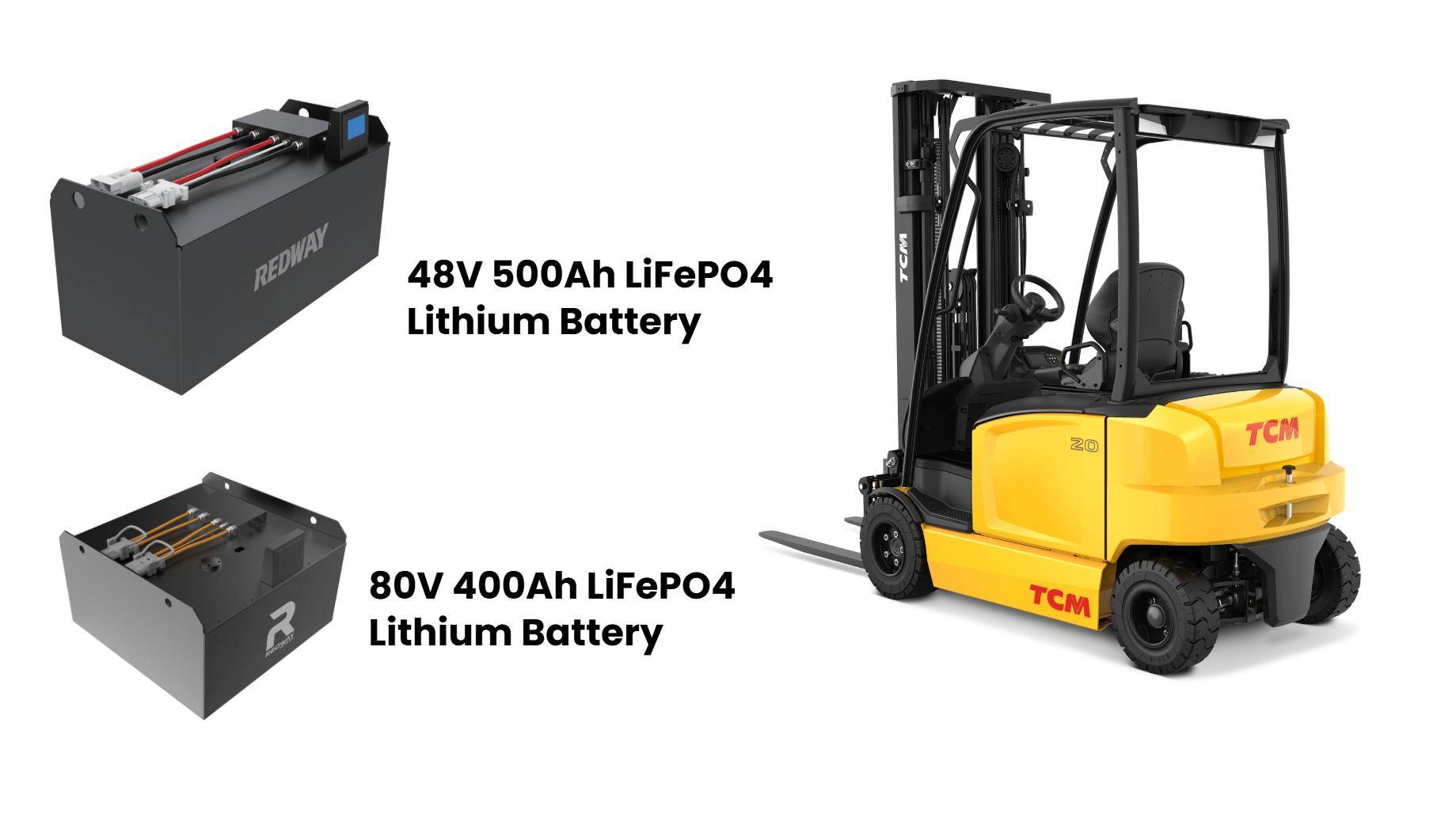
Blog
How Do Forklift Batteries Power Industrial Operations Efficiently?

Forklift batteries are rechargeable power sources, typically lead-acid or lithium-ion, designed to supply energy to electric forklifts. They balance high energy output, durability, and cost-effectiveness, ensuring seamless material handling in warehouses and industrial settings. Proper maintenance, charging practices, and selecting the right battery type optimize performance, lifespan, and operational efficiency.
LiFePO4 Forklift Batteries OEM Manufacturer
What Are the Different Types of Forklift Batteries?
Forklift batteries primarily include lead-acid (flooded, AGM, gel) and lithium-ion variants. Lead-acid batteries are cost-effective and widely used, requiring regular maintenance. Lithium-ion batteries offer longer lifespans, faster charging, and zero maintenance but come at a higher upfront cost. Choosing between them depends on budget, usage frequency, and operational requirements.
How Do Charging Practices Affect Forklift Battery Lifespan?
Proper charging involves avoiding partial charges for lead-acid batteries and utilizing opportunity charging for lithium-ion. Overcharging or undercharging reduces lifespan. Temperature-controlled environments and using manufacturer-approved chargers prevent thermal runaway and voltage irregularities, ensuring optimal energy retention.
Partial charging of lead-acid batteries accelerates sulfation – a process where sulfate crystals build up on plates, reducing capacity. For lithium-ion models, opportunity charging (short bursts during breaks) is safe and extends daily runtime. A 2022 study by BatteryTech Analytics showed lithium-ion batteries charged to 50% 8x/day retained 94% capacity after 3 years versus 78% for lead-acid counterparts. Thermal management is equally critical: charging at temperatures above 113°F (45°C) degrades electrolyte solutions, while sub-freezing conditions increase internal resistance.
| Charging Method | Lead-Acid Impact | Lithium-Ion Impact |
|---|---|---|
| Partial Charges | Reduces lifespan by 15-20% | No adverse effects |
| Opportunity Charging | Causes stratification | Extends runtime by 22% |
| Full Discharge Cycles | Required weekly | Avoid below 20% |
Which Maintenance Strategies Prolong Forklift Battery Efficiency?
Routine maintenance includes watering lead-acid batteries, cleaning terminals, and equalizing charges. For lithium-ion, firmware updates and monitoring discharge cycles are key. Regular inspections for corrosion, leaks, or swelling prevent premature failure. Implementing battery rotation systems also distributes wear evenly.
Why Is Battery Capacity Critical for Forklift Performance?
Capacity (measured in amp-hours) determines runtime and load-handling capabilities. Undersized batteries cause frequent downtime, while oversized ones add unnecessary weight. Matching capacity to shift durations and load requirements ensures uninterrupted operations and avoids overstraining the battery.
When Should You Replace a Forklift Battery?
Replace batteries when capacity drops below 80%, charging cycles take longer, or physical damage occurs. Lithium-ion batteries show gradual degradation, while lead-acid may require replacement every 5-7 years. Performance metrics and voltage testing help determine replacement timing.
How Do Lithium-Ion Batteries Revolutionize Forklift Operations?
Lithium-ion batteries eliminate maintenance, reduce charging times (1-2 hours), and operate efficiently in cold environments. Their lightweight design minimizes forklift wear and tear, while higher energy density supports multi-shift operations. Though costly upfront, they lower long-term expenses through extended lifespans (up to 3x lead-acid).
What Safety Risks Are Associated With Forklift Batteries?
Risks include acid spills, hydrogen gas emissions (lead-acid), thermal runaway (lithium-ion), and electrical shorts. Proper ventilation, PPE, and spill containment systems mitigate hazards. Training operators in emergency protocols for leaks or fires is critical.
Lead-acid batteries release hydrogen gas during charging – concentrations above 4% become explosive. Facilities must install ventilation systems moving 1-15 air changes/hour depending on battery bank size. Lithium-ion risks center on thermal runaway: a 2021 OSHA report noted 37% of warehouse fires originated from damaged Li-ion cells igniting adjacent materials. Emergency protocols should include Class D fire extinguishers for metal fires and acid-neutralizing kits for spills. All batteries require insulated tools during maintenance to prevent short circuits.
| Risk Type | Prevention Measure | Emergency Response |
|---|---|---|
| Hydrogen Explosion | Explosion-proof charging stations | Evacuate & ventilate |
| Acid Spills | Spill containment pallets | Apply baking soda |
| Thermal Runaway | Temperature sensors | Use sand buckets |
“Lithium-ion adoption is accelerating due to automation demands. At Redway, we’ve seen warehouses cut energy costs by 30% by switching to lithium and implementing smart charging stations. However, legacy lead-acid systems remain viable for low-intensity operations. The key is aligning battery choice with workflow data and predictive maintenance analytics.”
— Michael Tran, Battery Systems Engineer, Redway
Conclusion
Forklift batteries are pivotal to industrial efficiency. Selecting the right type, adhering to maintenance protocols, and understanding charging nuances maximize ROI. Emerging technologies like lithium-ion and IoT-enabled monitoring tools are reshaping the landscape, offering smarter, sustainable solutions for modern warehouses.
FAQs
- Q: Can lithium-ion forklift batteries be used outdoors?
- A: Yes, lithium-ion performs reliably in extreme temperatures (-20°C to 60°C), unlike lead-acid, which loses efficiency in cold.
- Q: How often should lead-acid batteries be watered?
- A: Check weekly; add distilled water after charging to cover plates, avoiding overfilling.
- Q: Are forklift batteries recyclable?
- A: Lead-acid batteries are 99% recyclable. Lithium-ion recycling programs are expanding but less established.



